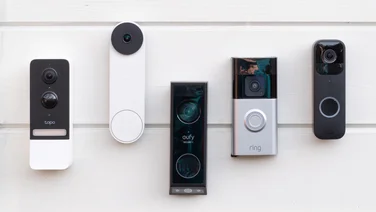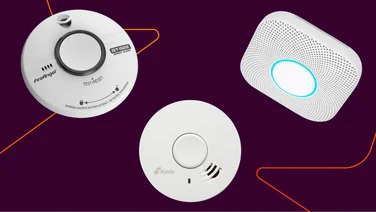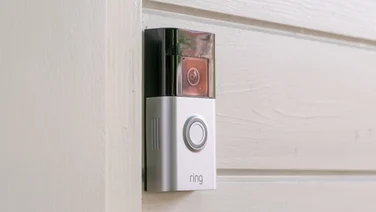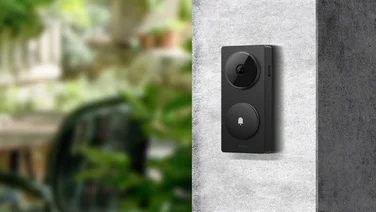To help us provide you with free impartial advice, we may earn a commission if you buy through links on our site. Learn more






- Very versatile
- Good-quality footage
- POE is genuinely useful
- Hefty subscription costs are basically essential
You may know Ring from its original product: the video doorbell. These are great: I have a Ring Video Doorbell Pro installed in my house and it’s easy to recommend, especially if you have a large front garden to monitor, allowing your doorbell to moonlight as a security camera.
Given this second function, it’s perhaps unsurprising that Ring has moved out into the world of dedicated security cameras to complement the doorbell. And, like the Ring Spotlight Camera, the Stick Up Cam is a fine product that falls down on its subscription prices, which feel optional in a doorbell but essential for a security camera.
Ring Stick Up Cam review: What you need to know






That’s a pity, because there’s a huge amount to be positive about with the Ring Stick Up Cam, from the brilliant design to the quality of the footage it can capture.
Let’s start with that design because it’s really clever. The camera itself is a small, cute-looking cylinder with a stand that, out of the box, sits below it. Pop it on a shelf, and it’s ready to go, and you can adjust the angle to your liking.
The clever bit is that the stand can be adjusted with the bundled screwdriver to stick out the back for wall mounting or rotated a full 180 degrees for mounting to the ceiling. The base even has a built-in spirit level to make sure you’re attaching it level. In other words, it’s extremely versatile and can be set to point wherever you want it.

The fact that this version is wired may impose some limitations for you, of course, depending on how busy you want to get with a drill. There is a battery-operated version available for the same price but, for some reason, it has a slightly narrower field of view: 115 degrees compared with the wired version’s 150 degrees.
It also only offers “adjustable motion detection” rather than the “customisable motion detection” available here. Like the Ring Pro doorbell, this means you can mark specific areas of the camera’s view for special attention, which is handy if you want to cover your garden, but not your neighbour’s.

The Stickup Cam can be used indoors or outdoors (it’s IPX5-rated), and you don’t need to worry about good lighting, as it switches to night vision when in the dark. I’ve been using it indoors and setup is a cinch. You can either power it via micro-USB or, if you need a bit more range, there’s also support for Power over Ethernet (PoE). That may not sound like a big deal but it’s actually a really good feature. Not only does it mean you can power the camera from an improbably long distance (PoE works over distances up to 100 metres, so practically speaking the only limit is the length of lead you’re willing to buy) but you only need one cable, and you don’t need to worry about Wi-Fi signal strength, either.
And, once set up, you can forget about it. The camera will detect motion and alert you via the app, which may prove a bit annoying for an indoor camera but you can adjust these alerts to your own schedule so you only get a prod at night or when you’re at work.






It’s a shame you can’t set it to automatically turn off motion alerts when it detects your phone nearby. You can, however, adjust the sensitivity within the app, so it only detects people – handy if you have inquisitive cats like the one below:
As you can see from the clip, the footage quality is very good and the Ring Stick Up Cam provides nice, crisp video on demand, too. Like the doorbell, you can enable two-way communication with a tap of the app, allowing you to warn intruders they’re on camera, or to startle your cats from the office.
As with other security cameras, you can also trigger a siren to disturb intruders but because the Ring Stick Up camera has no base station, sound comes straight from the camera, and as a result it’s a touch reedy. The app warns when you trigger it that it’s loud enough to alert neighbours, so it was something of a let down to find that it’s barely loud enough to be heard in the next room.
Still, it does the job: if an intruder hears it and sees a camera, the chances are they’re not going to hang around long enough to see if its bite is worse than its bark.
Ring Stick Up Cam review: Price and competition












All in all, there’s very little bad you can say about the Ring Stick Up Cam, until you get to the Ring Protect Plans, which are uniformly priced across the Ring range.
There are three tiers: free, £25 per year and £80 per year. Working backwards, the £80 per year model supports an unlimited number of Ring products and automatically stores motion-triggered video recordings for 30 days. You can download these at any time, giving you valuable evidence if your house is broken into.
The £25-per-year version is the same but only supports one Ring device: a doorbell or a motion camera. The free model sends you motion alerts, lets you watch a livestream of the camera and use the two-way microphone, but it doesn’t record or store footage or let you do anything with that footage.






It’s hard to know where to start with this. The free version is probably fine for a doorbell, because the two-way communication and live alerts are all you need but a security camera is pointless if you can’t save recordings. If you were at work and got a motion alert, showing a burglar wandering around your living room, you can call the police or remotely set off the alarm but when they inevitably run away before the police arrive, you’ll have no footage to help them apprehend the perp.
Secondly, you need at least three Ring devices to make the £80 per year plan worth buying – otherwise it’s still cheaper to buy three individual plans at £25 each. I hope that parent-company Amazon one day bundles these charges with an Amazon Prime subscription, because right now it’s very hard to recommend.
It’s even harder to escape that pricing when you look at the alternatives on offer. Although the Ring Stick Up Cam is cheaper as a standalone product (£179), both the D-Link DCS-2802KT (£440 for two cameras) and Arlo Pro 2 (£290 for one camera) are far more generous with their subscription plans. The former offers 24-hour storage free of charge for up to three cameras while the latter is even more generous, providing seven days’ worth of footage for five cameras. Both have paid options to expand this, but the point is they’re not essential. That makes Ring’s offering look pretty stingy, no matter how compelling the basic product is.
Ring Stick Up Cam review: Verdict












The Ring Doorbell range is excellent and very easy to endorse, because you don’t really need the subscription service to get the most out of it. For Ring’s range of security cameras, the opposite is true: compared to the competition, Ring subscriptions start to add up very quickly indeed.
That’s a real shame, because there’s really nothing too negative to say other than that. The Ring Stick Up Cam is a neatly designed, versatile product with a good app and high-quality footage. Just beware that to get the most out of it, you’ll need to pay a lot more than the £179 asking price over the lifetime of the product.










